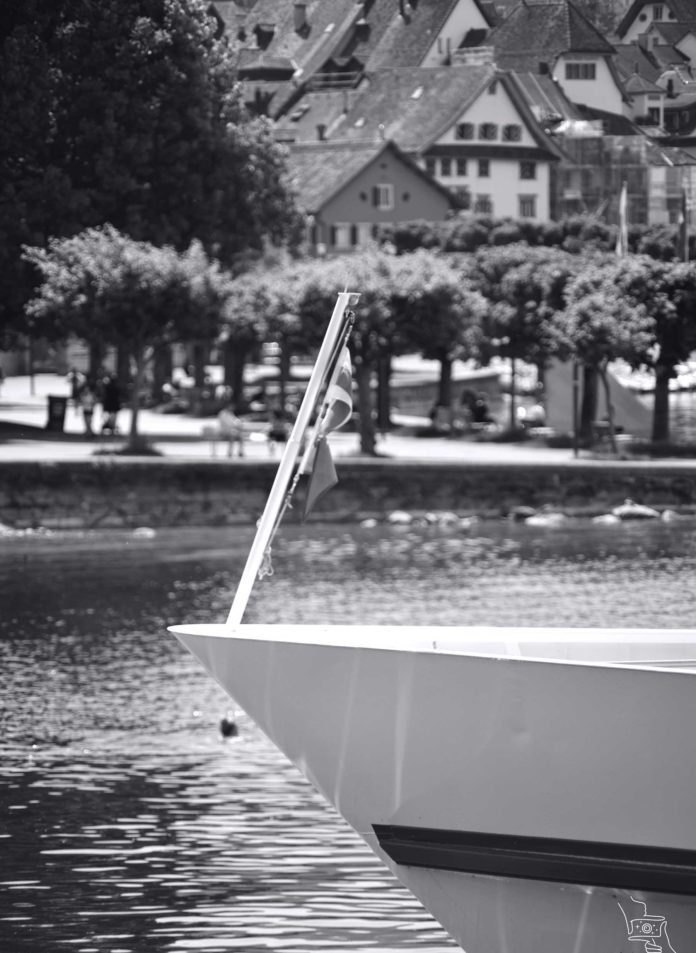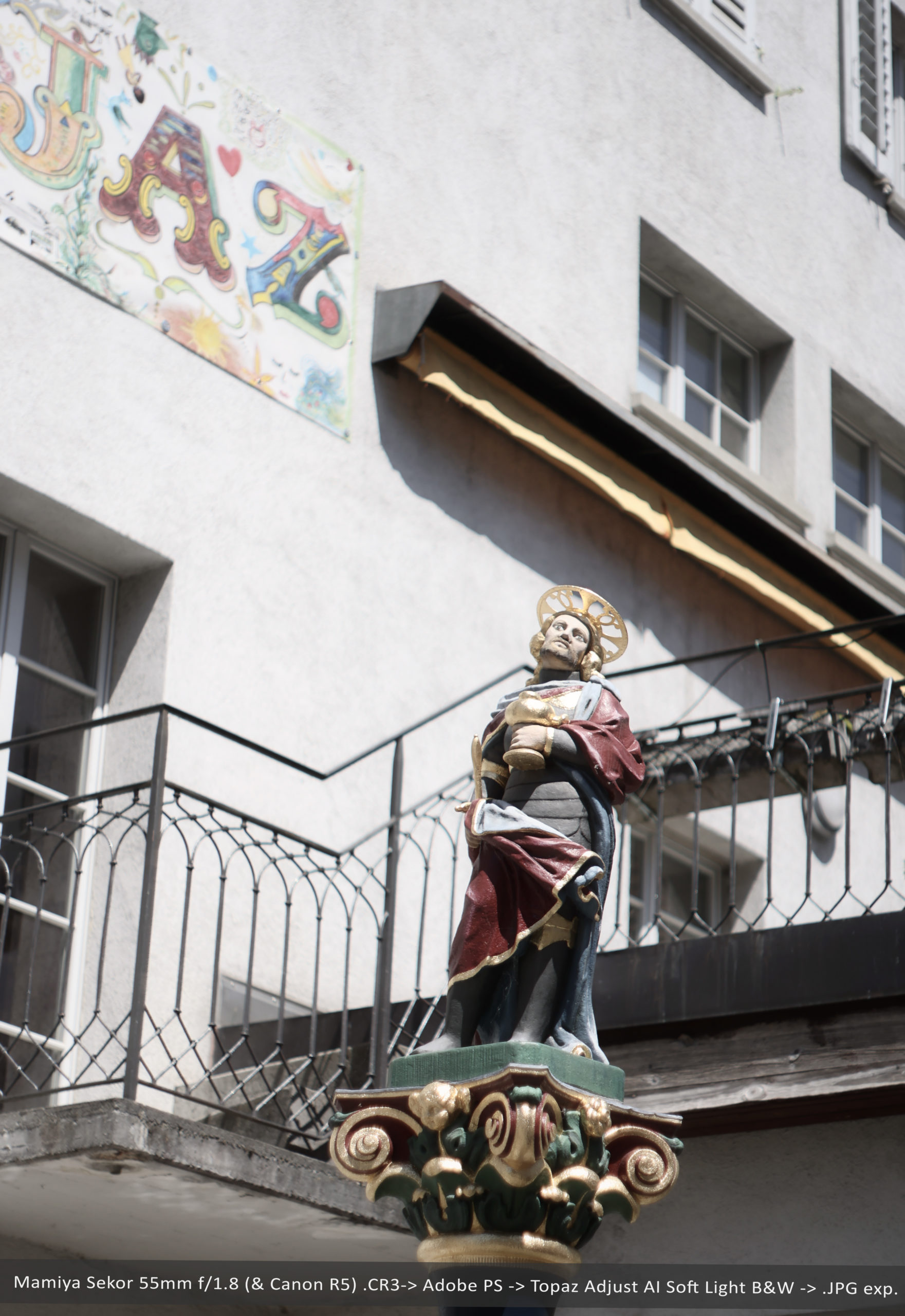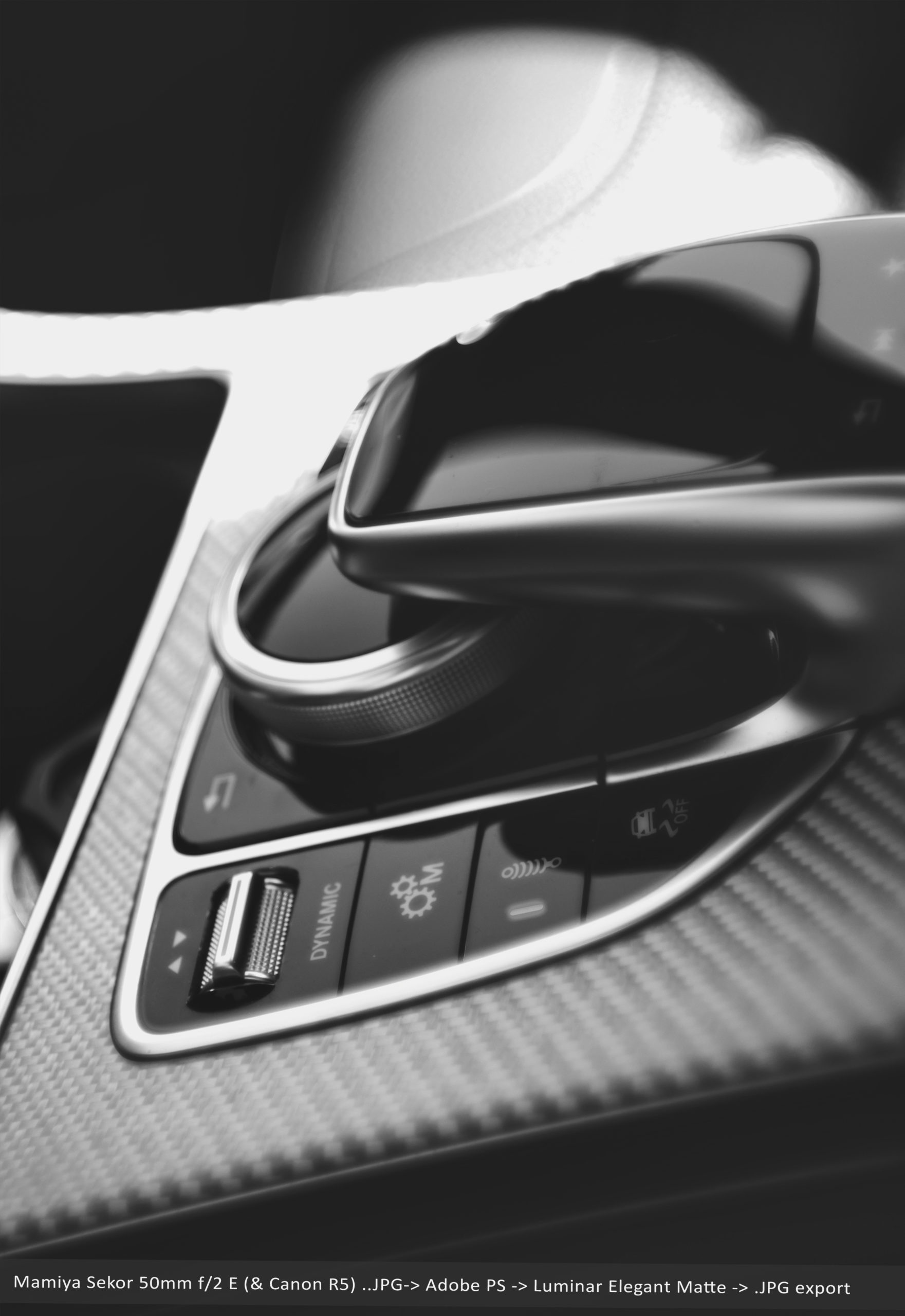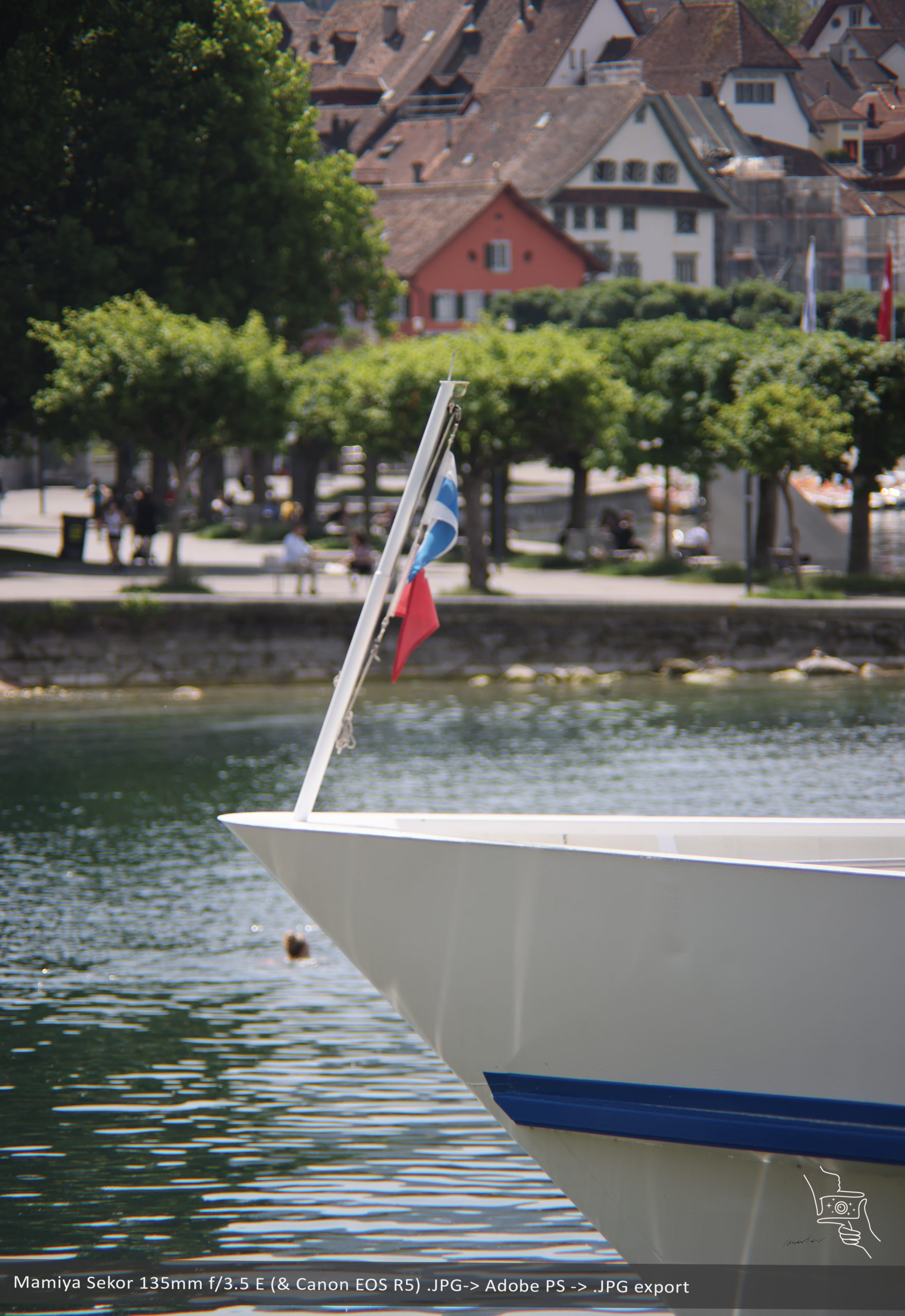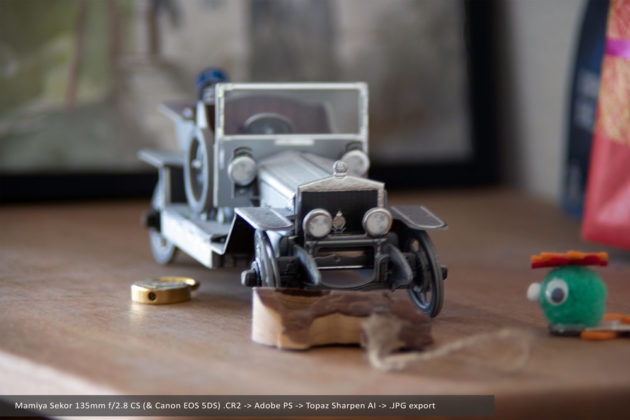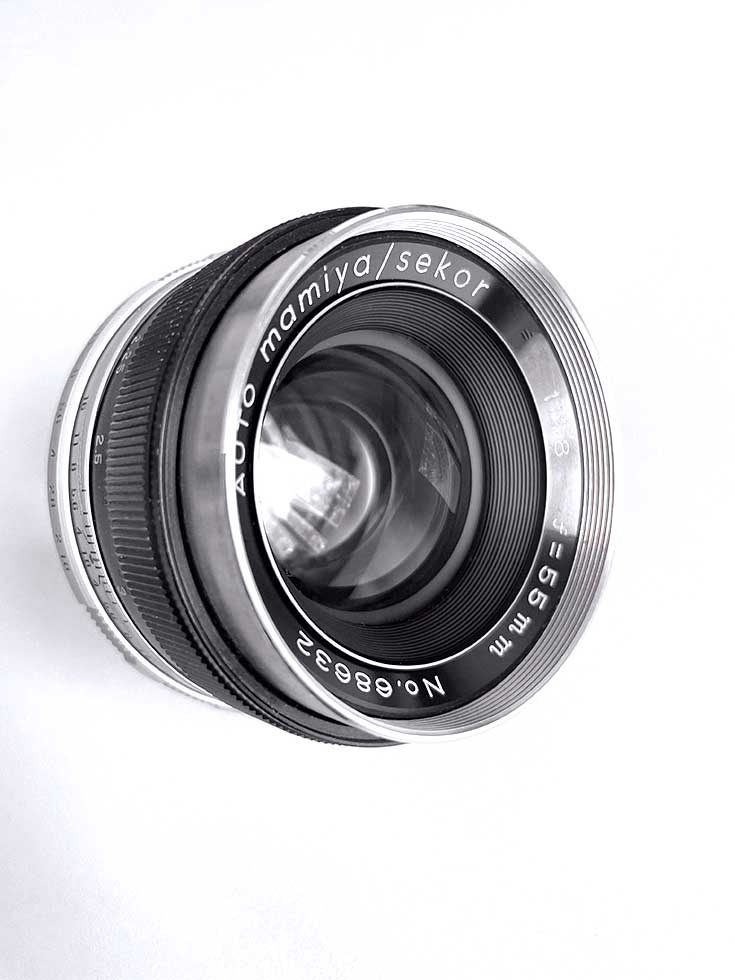Lens overview
The Mamiya-Sekor name spans Mamiya’s 35mm SLR glass from the late 1960s M42 screw-mount era (Auto/SX lenses) to the early 1980s Mamiya Z/ZE (“E”) bayonet era. In practice, that means compact, all‑metal primes—most famously the Auto/SX 55 mm f/1.8 (1974)—and later Sekor E lenses such as the 28 mm f/3.5 (1980), 50 mm f/1.7 (1980), and 135 mm f/3.5 E. Across the family, you’ll find solid mechanics, long focus throws, single‑ or multi‑coating depending on vintage, and a rendering that favors gentle contrast and classic tonality. An excellent example is the Sekor 135 mm f/2.8 CS. It belongs to the short‑lived NC/CS bayonet system (for the NC1000 / NC1000s, circa 1977–1980). Compared with the earlier M42 Auto/SX 135 mm f/2.8, the CS lens is smaller and lighter (≈ 314 g, 52 mm filters), uses 5 blades (vs. 6 on many M42 versions), and is typically a 5‑element/4‑group design with 1.5 m MFD and an ≈ 18° diagonal angle of view. Versus the later Sekor E 135 mm f/3.5 (for Z/ZE), the CS keeps a conventional aperture ring and is one stop faster. In practice, the CS 135 mm is a compact, contrasty short tele for the NC bodies—and a bit of a puzzle to adapt today.
Build and ergonomics
All‑metal barrels, engraved scales, and firm aperture detents give these lenses a reassuring, durable feel. Focus is typically long‑throw and smoothly damped, which is excellent for deliberate work (portraits, landscapes), if slower for fast action. The 55/1.8 (M42) weighs ~185 grams with 52mm filters. At the same time, many Sekor E lenses are even lighter.
Optical performance
- Sharpness – Normal lenses, such as the 55/1.8, are usable wide open in the center and tighten up by f/4–5.6, with the corners typically best by f/8. Wide‑angles (e.g., E 28/3.5) and short telephotos (E 135/3.5) follow the usual vintage pattern: stop down for best uniformity.
- Color & Contrast – A neutral-to-warm palette with moderate contrast lends a vintage feel and welcomes post-processing.
- Bokeh & rendering – Expect pleasant, characterful blur rather than creamy modern smoothness. Blade counts vary (e.g., 6‑blade on many 55/1.8 copies; 5‑blade on some Sekor E lenses), so highlight geometry changes with aperture.
- Flare & backlight – Older coatings result in veiling flare and contrast loss when strong light sources are included; a simple hood helps markedly.
Digital adaptation
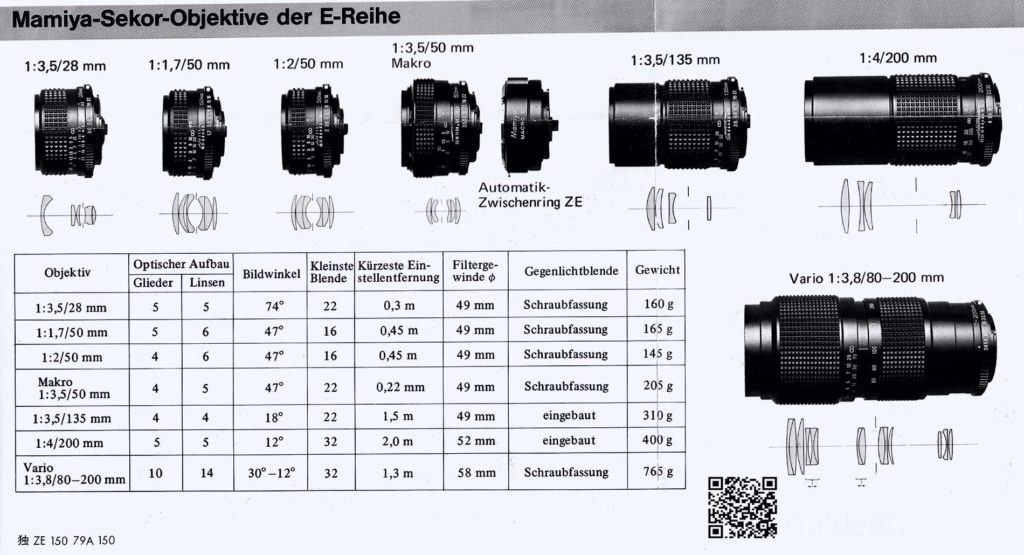
- M42 (Auto/SX) → Mirrorless (RF / Z / E / X / MFT) and Canon EF: simple, glass‑less adapters preserve infinity focus and are widely available. On Nikon F DSLRs, infinity requires an adapter with corrective glass (quality penalty); Nikon Z mirrorless avoids this.
- Mamiya Z/ZE (“Sekor E”) → EF / EF‑M / mirrorless: flange distance ≈45.5 mm enables infinity‑focus adapters to Canon EF and many mirrorless mounts. Because Sekor E lenses lack an aperture ring, choose an adapter with an aperture control (a mechanical iris actuator) for exposure control on digital bodies.
- Mamiya NC/CS (Sekor CS) → Mirrorless: harder than M42 or Sekor E. CS‑specific adapters are scarce; many sellers only offer ZE‑mount adapters (for the later Z/ZE lenses). While CS and ZE bayonets are partly similar, a CS lens on a ZE adapter can sit rotated and often won’t lock or won’t stop down (aperture lever not actuated). So it’s not recommended as a general solution. A few niche/rare adapters exist, but if your goal is easy digital use, M42 Auto/SX or Sekor E (Z/ZE) lenses are the practical route.
- General tips: enable IBIS and set the correct focal length; use focus magnification/peaking; expect stop-down metering and no EXIF data. (Samples here were shot with M42→EOS R workflows.)
Historical and collector context
The M42 Auto/SX era (mid‑1970s) delivered classic regular lenses like the 55/1.8 (6e/4g), while the early‑1980s brought the Mamiya Z/ZE system with Sekor E lenses (electronically controlled apertures, lighter builds). Collectability is moderate: prices are reasonable, and condition (blades, haze, balsam) matters more than rare variants. The 28/3.5 E (1980) and 50/1.7 E (1980) are common and affordable; clean 55/1.8 copies remain a terrific value.
Sekor 135 mm f/2.8 CS (1977–1980). Within the NC/CS era, the 135/2.8 CS is well‑regarded: compact (~314 g), 5‑blade, 52 mm filters, 1.5 m MFD, and ≈ 18° AoV. It’s usually affordable on the used market—often €30–100 / US $35–110 depending on condition—but buyers should factor in adaptation hurdles (CS adapters are uncommon, and ZE adapters don’t solve the CS stop‑down/locking quirks). As a native lens on NC bodies, it shines; for mirrorless, consider whether an M42 Auto/SX 135/2.8 or the later E 135/3.5 is a smoother path.
When first released in the early 1970s, the Mamiya-Sekor 55 mm f/1.8 was positioned as an affordable standard lens—priced around US $60 – 70 at launch (roughly US $450 – 500 in today’s value)—and it remains inexpensive on the collector market today, typically selling for €50 – 80 depending on condition.
Impressions
In the field, the 55/1.8 is the standout “daily” vintage fifty: tactile focusing, natural color, and convincing sharpness once you stop to f/4–5.6. The E-series primes feel feather-light on mirrorless cameras, but remember to use the aperture-control adapter. For all, a hood and thoughtful backlight management unlock their best micro‑contrast. (Your article’s samples on EOS R5 illustrate this well).
Alternatives/peers. Among vintage short tele lenses, the Cosina/Cosinon 135 mm f/2.8 stands out for easy adaptation (commonly M42 or Pentax K) and very low prices (often €20–60). Optically, many vintage 135/2.8 designs render similarly (best around f/4–5.6); the choice usually comes down to the practicality of the mount and budget. If you specifically want Mamiya rendering, the M42 Auto/SX 135/2.8 adapter is simpler to use than the CS version. At the same time, the E 135/3.5 (Z/ZE) is slower but easy to run on mirrorless with the right aperture‑control adapter.
Sample Photos
Verdict — Pros and Cons
Pros
- Solid all‑metal construction (Auto/SX) with smooth, long focus throw
- Classic rendering with pleasing color; substantial value for money
- Easy adaptation (for 55/1.8) to mirrorless; M42→EF is trivial and widely supported
- CS 135/2.8: compact, contrasty short tele for NC bodies; good value if you shoot the system.
Cons
- Flare/contrast loss in backlight; a hood is essential
- Slower handling due to long throws; not ideal for fast action
- Sekor E lenses lack aperture rings → require specific adapters
- CS mount adaptation: CS → mirrorless is tricky; CS‑specific adapters are scarce and ZE adapters don’t fully solve it (locking/stop‑down issues).
- M42→Nikon F DSLR needs optical‑element adapter for infinity (quality hit)


